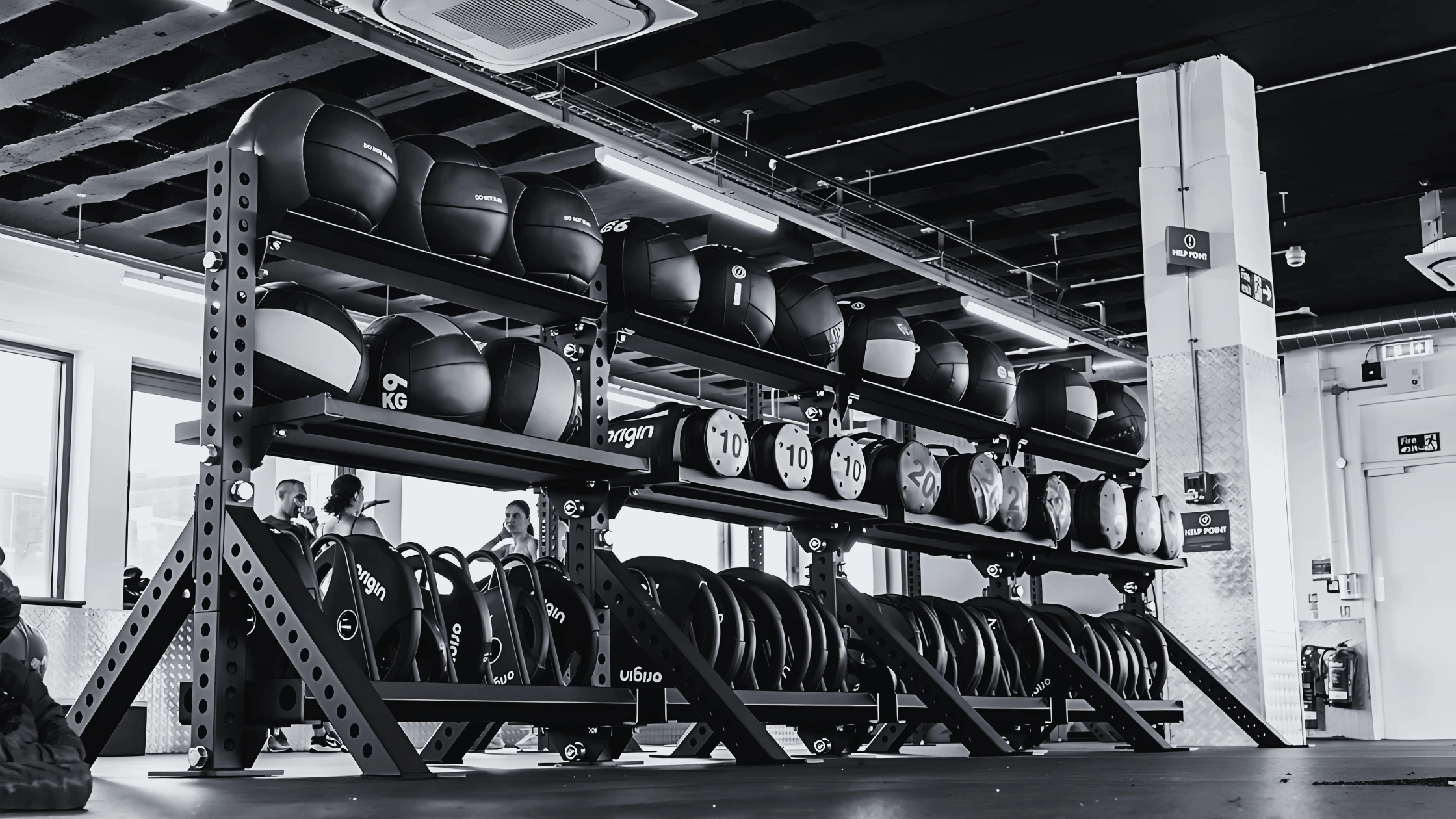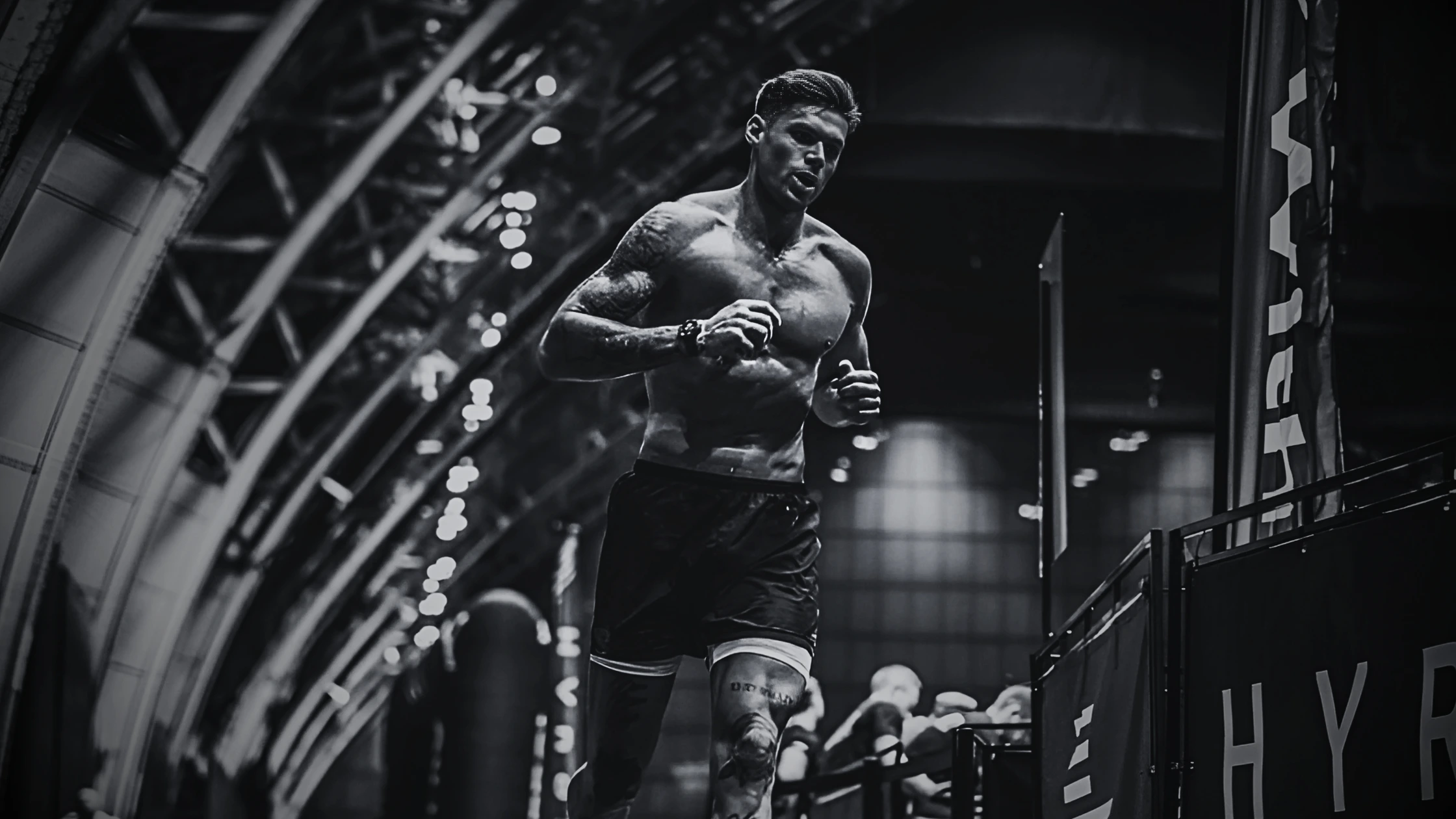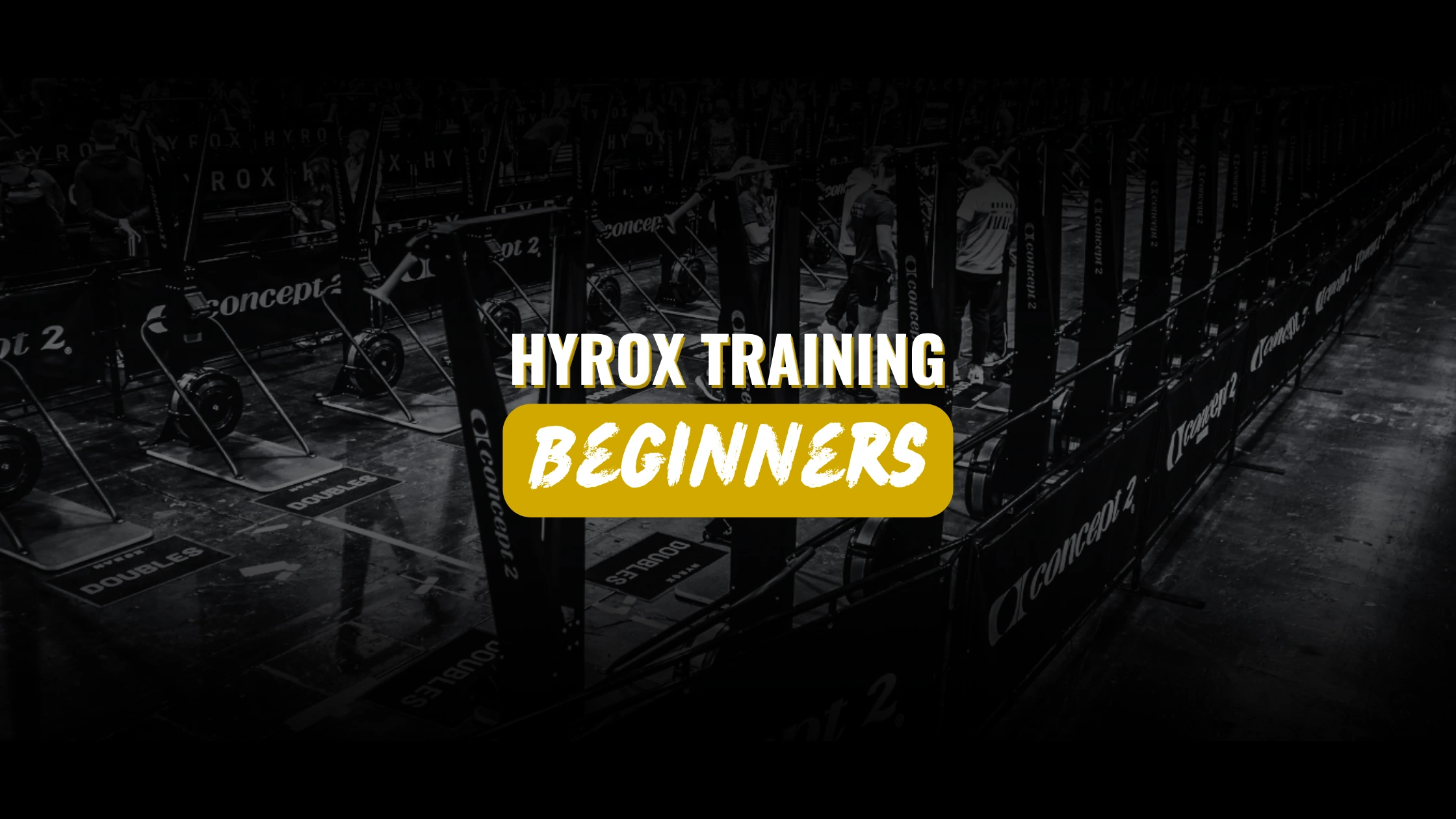HYROX training has transformed from a small event with 650 participants into a global fitness movement. Over 300,000 competitors are expected in 2025, and the competition now spans more than 70 locations worldwide.
The event matches a marathon’s endurance requirements. Participants run eight 1-kilometer segments combined with eight functional exercise stations. Anyone can join regardless of their fitness level because the exercises don’t require complex technical skills.
Beginners can complete their first HYROX competition successfully with the right preparation. A well-laid-out HYROX training plan lasting 8-12 weeks helps build cardiovascular and muscular endurance step by step.
Basic overview of HYROX format
“There are four different race formats to choose from, covering every fitness level. The race has no time limits and no qualification is required to participate.” — HYROX
HYROX stands out as a standardized indoor fitness race that combines running with functional workouts. The competition follows a similar format worldwide with eight 1-kilometer runs mixed with eight functional workout stations. Athletes compete in large indoor venues where spectators can watch the whole ordeal from start to finish.
The workout stations consist of:
- SkiErg (1000m)
- Sled Push (50m)
- Sled Pull (50m)
- Burpee Broad Jumps (80m)
- Rowing (1000m)
- Kettlebell Farmers Carry (200m)
- Sandbag Lunges (100m)
- Wall Balls (100 reps)
Athletes move through designated “Roxzones” between stations, which adds an extra 200-300 meters to their total experience.
HYROX gives newcomers a chance to try fitness competitions. The movements need simple technical skills compared to other fitness sports, making them perfect for average gym-goers. On top of that, it offers multiple divisions for different experience levels, including Individual Open, Doubles, and Team Relay formats.
Team Relay division works great as a starting point, letting four participants split the workload. This setup helps beginners pick exercise stations that match their strengths and build confidence in a competitive environment.
The competition’s similar format everywhere creates a level playing field, so participants can track their progress whatever their location. The community aspect is a great way to get support, as fellow competitors and spectators cheer you on throughout the race.
HYROX tests general physical preparedness instead of specialized skills. This integrated approach helps beginners build a well-rounded fitness base that combines strength, endurance, and functional movement patterns to benefit real-life activities.

Must-have Equipment and Space Needs
HYROX training success depends on smart equipment choices based on your space and budget.
Your HYROX preparation just needs specific equipment to match competition movements. The core training gear has kettlebells ranging from 16kg to 32kg for farmer’s carries, a rowing machine for the 1000m station, and a SkiErg with ergometer damper settings between 5-7. You’ll also need sandbags weighing between 10kg to 30kg for lunges, and wall balls ranging from 4kg to 9kg.
Your choice between home and gym training depends on equipment and space you have available. Commercial gyms give you access to specialized equipment like sleds, which require weights between 78kg to 202kg for different divisions. Home training just needs about 15-20 meters of space for movements like farmer’s carries.
A treadmill works well as an alternative to outdoor tracks for indoor running. Gyms usually have complete equipment setups, especially HYROX-affiliated facilities that keep competition-standard gear.
Related: Best Equipment for Home Gym
Budget-friendly alternatives
You can use creative substitutions if you have limited resources. Resistance bands are a budget-friendly alternative for the SkiErg station. A towel on a smooth floor can work for sled pulls, while resistance bands can simulate sled pushes. Simple equipment substitutions include:
- Kettlebells or dumbbells for farmer’s carries and sandbag exercises
- Jump rope for cardio conditioning
- Medicine ball for wall ball exercises
- Resistance bands for multiple movement simulations
These versatile alternatives make HYROX training available without a big equipment investment. You can modify exercises if space is tight – like doing high knees in place instead of running, or using jump rope sessions for cardio work.
Building Your HYROX Fitness Foundation
“Simply being strong physically or just as a runner won’t cut it in HYROX. You may be able to run a 6-minute mile, but can you run after performing a 50m sled push or a 50 meter sled pull?” — Start HYROX
Proper form and technique are the life-blood of HYROX preparation. A well-laid-out approach during the original training phase builds a solid foundation for advanced training.
Your trip starts when you become skilled at fundamental movements that make up HYROX stations. Note that most individuals with simple fitness levels can safely complete these exercises. The core movements have deadlifts, squats, and pull-ups that build essential strength. You should focus on proper form in compound exercises during the original phase. This develops the muscular endurance needed for stations like wall balls and sandbag lunges.
Hyrox Training Plan: First month focus
A well-designed first month of training builds aerobic capacity and strength together. The recommended structure has three main components:
- One weekly strength session that targets compound movements
- Two cardio-focused workouts that mix running with functional exercises
- One recovery day for mobility work. We recommend using a peanut massage ball to release tight areas.
The original training phase should stay at around 80% of maximum effort. This approach prevents early burnout and builds the needed endurance base. Proper hydration becomes vital as training volume increases and directly affects muscle recovery and performance.
Common beginner mistakes to avoid
New athletes often face setbacks because they push too hard in early training sessions. They try full HYROX simulations too often, which leads to excessive fatigue and possible injury. You should master individual stations before attempting full race simulations.
Poor running form and pacing strategies create another significant problem. Running segments need specific attention since they make up much of the race. You just need proper footwear because inadequate shoes can cause leg and foot strain.
The interference between strength and endurance training needs careful planning. Structure workouts with enough rest between different training styles. On top of that, proper nutrition becomes vital since poor fueling can hurt both strength gains and endurance development.
PRO TIP: A lot of beginner hyrox athletes forget to run under fatigue. Running under fatigue is completely different to just going for regular jogs. Make sure you are incorporating scenarios into your training whether you are running with a high heart rate. For example, do 50 burpees – 1km run – 50 burpees – 1km run.
Hyrox Training Plan: Your Weekly Schedule
A well-laid-out weekly schedule is the foundation of successful HYROX preparation. Good planning will give a perfect balance between training adaptation and recovery periods.
Sample 3-day training week
Beginners should follow three primary workout days. A balanced weekly schedule has:
- Day 1: Lower body strength training with full range squats and lunges, and heavy sled work after that
- Day 2: HYROX-specific conditioning that focuses on burpee broad jumps and sled movements
- Day 3: Running session mixed with metabolic conditioning
You need a full warm-up to prepare your body for the workout ahead. The cool-down period starts your recovery process after completing the main exercises.
Rest and recovery importance
Sleep is the life-blood of effective recovery. Athletes need 7-9 hours nightly. Deep sleep cycles make muscle repair and hormone regulation easier. This process also reduces inflammation throughout your body.
Good hydration and balanced nutrition speed up your recovery. Proteins help muscle repair after intense workouts. Carbohydrates fill up your empty energy stores. Optimum Nutrition protein is also a staple for most Hyrox athletes.
Active recovery between training sessions is vital. Light exercises, stretching, or gentle walking keep blood flow going without overworking your system. Notwithstanding that, you must respect complete rest days. We recommend 2-3 rest days weekly.
Watch out for overtraining signals. Your body shows signs through lasting muscle soreness and poor performance. Recovery monitoring is everything in long-term progress. Listen to your body’s response and adjust training intensity.
Keep your weekly schedule flexible to accommodate changes based on your energy levels and recovery status. Deload weeks reduce training volume by about 20%, preventing burnout and ensuring steady progress in your HYROX training plan.
Hyrox Training Plan: Setting Goals & Tracking Progress
Systematic measurement of progress helps optimize HYROX training results and keeps athletes motivated throughout their preparation.
Simple progress markers
Athletes need to focus on specific metrics that show improvement to track their performance. They should conduct regular assessments through marker sessions every 8-12 weeks. These sessions become the standards to evaluate progress in different areas:
- Running Performance: Track 1km split times and overall endurance
- Strength Metrics: Record weights and repetitions for key exercises
- Recovery Rate: Monitor heart rate patterns between workouts. Try to stay in zone 2-3 as much as possible.
- Station Efficiency: Time individual workout stations separately
- Power Output: Document improvements in sled pushes and wall balls
Technology makes tracking more accurate. Apps like Strava give detailed data analysis for running performance. So, keeping a training journal helps organize workouts and record achievements.
Mock races are a great way to indicate progress. Athletes can do complete event run-throughs or specific station combinations. Practice transitions between running and workout stations show areas that need improvement.

When to attempt first HYROX
The right time to attempt HYROX depends on several readiness indicators. On average, beginner Men complete the course in 1:35:00 and women in 1:38:02. These times serve as reference points rather than required targets for beginners.
Athletes should reach certain fitness milestones before their first HYROX. Building the capacity to run 10 kilometers continuously becomes the initial focus. The exact finishing time matters less than knowing how to maintain steady movement.
Simple strength standards include doing 100 burpees in a single session, even with breaks. Grip strength development for kettlebell carries becomes vital next. Wall balls need special attention for shoulder strength, which affects performance in the final station.
The doubles category gives newcomers an excellent starting point. Mixed doubles lets athletes share the workload, though women should note the higher weight requirements compared to female doubles. Training partners provide support and accountability until full readiness.
Many successful participants suggest experiencing the event firsthand instead of waiting for perfect preparation. This hands-on approach reveals areas needing work and helps set realistic goals for future competitions.
Final Words
HYROX is a realistic goal that anyone can achieve with well-laid-out preparation. The competition’s standardized format helps beginners make systematic progress throughout their training trip.
Your success comes down to a simple approach – become skilled at simple movements and stick to regular training schedules while keeping track of your progress markers. On top of that, it doesn’t matter if you don’t have all the equipment. You can find creative alternatives that work just as well to meet the competition’s needs.
Note that readiness builds up over time. Athletes should focus on building solid foundations through proper form and technique instead of rushing to competition day. This way, their bodies adapt better to handle the unique challenges of mixing running segments with functional exercises.
The path to finishing HYROX becomes easier when you focus on steady progress rather than perfect preparation. Setting realistic goals, taking proper rest, and adjusting your training intensity based on how your body responds will help you cross that finish line successfully.
HYROX Training Plan: FAQs
Q1. What is HYROX and how is it structured? HYROX is a standardized indoor fitness race that combines running with functional workouts. It consists of eight 1-kilometer runs interspersed with eight functional workout stations, including exercises like SkiErg, sled push/pull, burpee broad jumps, rowing, and wall balls.
Q2. How long does it take to prepare for a HYROX event as a beginner? For beginners, proper preparation for a HYROX event typically spans 8-12 weeks. This timeframe allows for building both cardiovascular and muscular endurance systematically, following a structured training approach.
Q3. What equipment is essential for HYROX training plan? Essential equipment for HYROX training includes kettlebells, a rowing machine, a SkiErg, sandbags, and wall balls. However, budget-friendly alternatives like resistance bands, jump ropes, and medicine balls can be used for home training.
Q4. How should beginners structure their weekly HYROX training? A beginner’s weekly HYROX training plan should ideally include three primary workout days: one focusing on lower body strength, another on HYROX-specific conditioning, and a third combining running with metabolic conditioning. Rest and recovery days are equally important in the schedule.
Q5. When should a beginner attempt their first HYROX competition? Beginners should consider attempting their first HYROX when they can run 10 kilometers continuously, perform 100 burpees in a single session (with breaks), and have developed sufficient grip and shoulder strength. However, many successful participants recommend experiencing the event firsthand rather than waiting for perfect preparation.


1 thought on “HYROX Training Plan For Absolute Beginners”
Comments are closed.